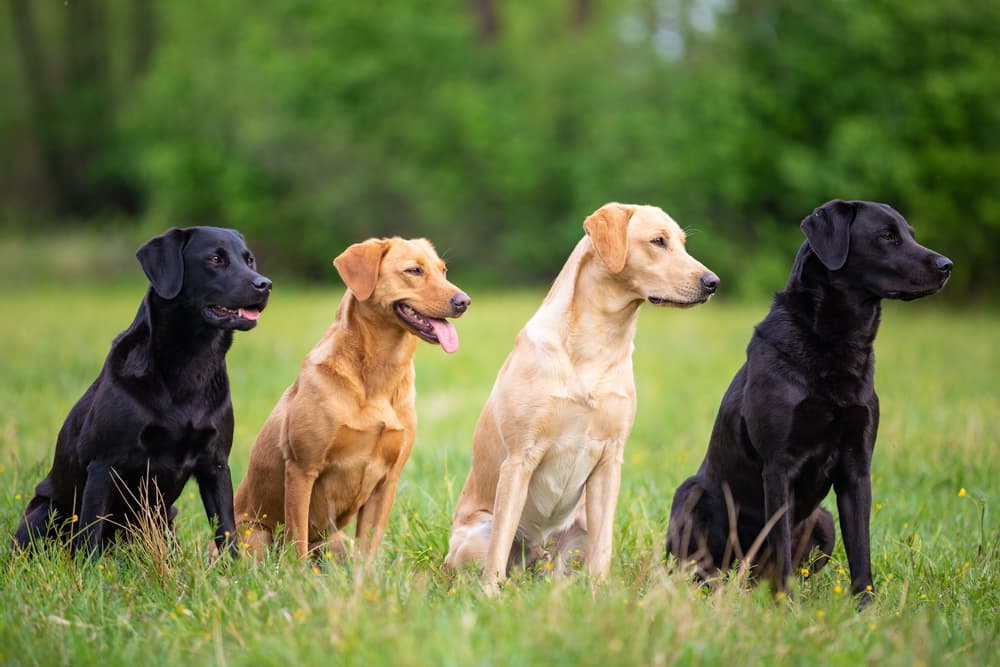With their expressive alert eyes, drop ears, broad heads, and “otter” tails, there is no mistaking a Lab. Their sturdy body is medium-sized and athletic, while the color of their thick water-repellent coat ranges from black to almost white, through chocolate and golden-yellow. As with many breeds who owe their history to the fishing industry, the Labrador has webbed feet.
A Labrador Retriever’s temperament is as characteristic as their physical appearance. They’re kind, outgoing, eager to please, and almost never aggressive. It is their eagerness to please and intelligence that makes them such a delight to train whether this is for family life or for a role in the world of canine employment. Underestimate their need for activity and stimulation, however, and you’ll end up with an over-boisterous dog that can be hard to handle. A bored Lab digs, chews, and barks to excess!




















